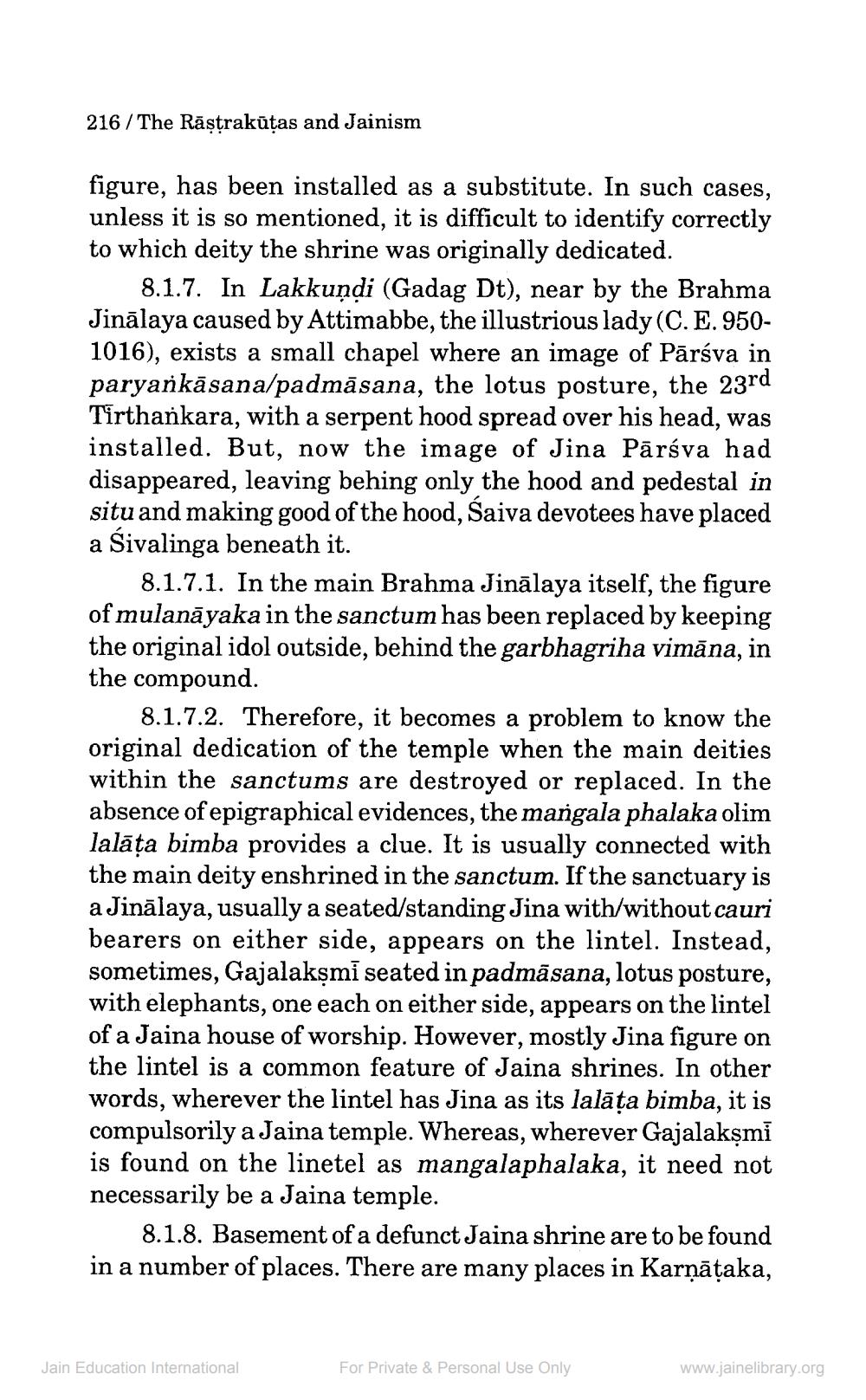________________
216 / The Rāstrakūtas and Jainism
figure, has been installed as a substitute. In such cases, unless it is so mentioned, it is difficult to identify correctly to which deity the shrine was originally dedicated.
8.1.7. In Lakkundi (Gadag Dt), near by the Brahma Jinālaya caused by Attimabbe, the illustrious lady (C. E.9501016), exists a small chapel where an image of Pārsva in paryankāsana/padmāsana, the lotus posture, the 23rd Tirthankara, with a serpent hood spread over his head, was installed. But, now the image of Jina Pārsva had disappeared, leaving behing only the hood and pedestal in situ and making good of the hood, Saiva devotees have placed a Sivalinga beneath it.
8.1.7.1. In the main Brahma Jinālaya itself, the figure of mulanāyaka in the sanctum has been replaced by keeping the original idol outside, behind the garbhagriha vimāna, in the compound.
8.1.7.2. Therefore, it becomes a problem to know the original dedication of the temple when the main deities within the sanctums are destroyed or replaced. In the absence of epigraphical evidences, the mangala phalaka olim lalāța bimba provides a clue. It is usually connected with the main deity enshrined in the sanctum. If the sanctuary is a Jinālaya, usually a seated/standing Jina with/without cauri bearers on either side, appears on the lintel. Instead, sometimes, Gajalakşmi seated in padmāsana, lotus posture, with elephants, one each on either side, appears on the lintel of a Jaina house of worship. However, mostly Jina figure on the lintel is a common feature of Jaina shrines. In other words, wherever the lintel has Jina as its lalāta bimba, it is compulsorily a Jaina temple. Whereas, wherever Gajalakşmi is found on the linetel as mangalaphalaka, it need not necessarily be a Jaina temple.
8.1.8. Basement of a defunct Jaina shrine are to be found in a number of places. There are many places in Karņātaka,
Jain Education International
For Private & Personal Use Only
www.jainelibrary.org




